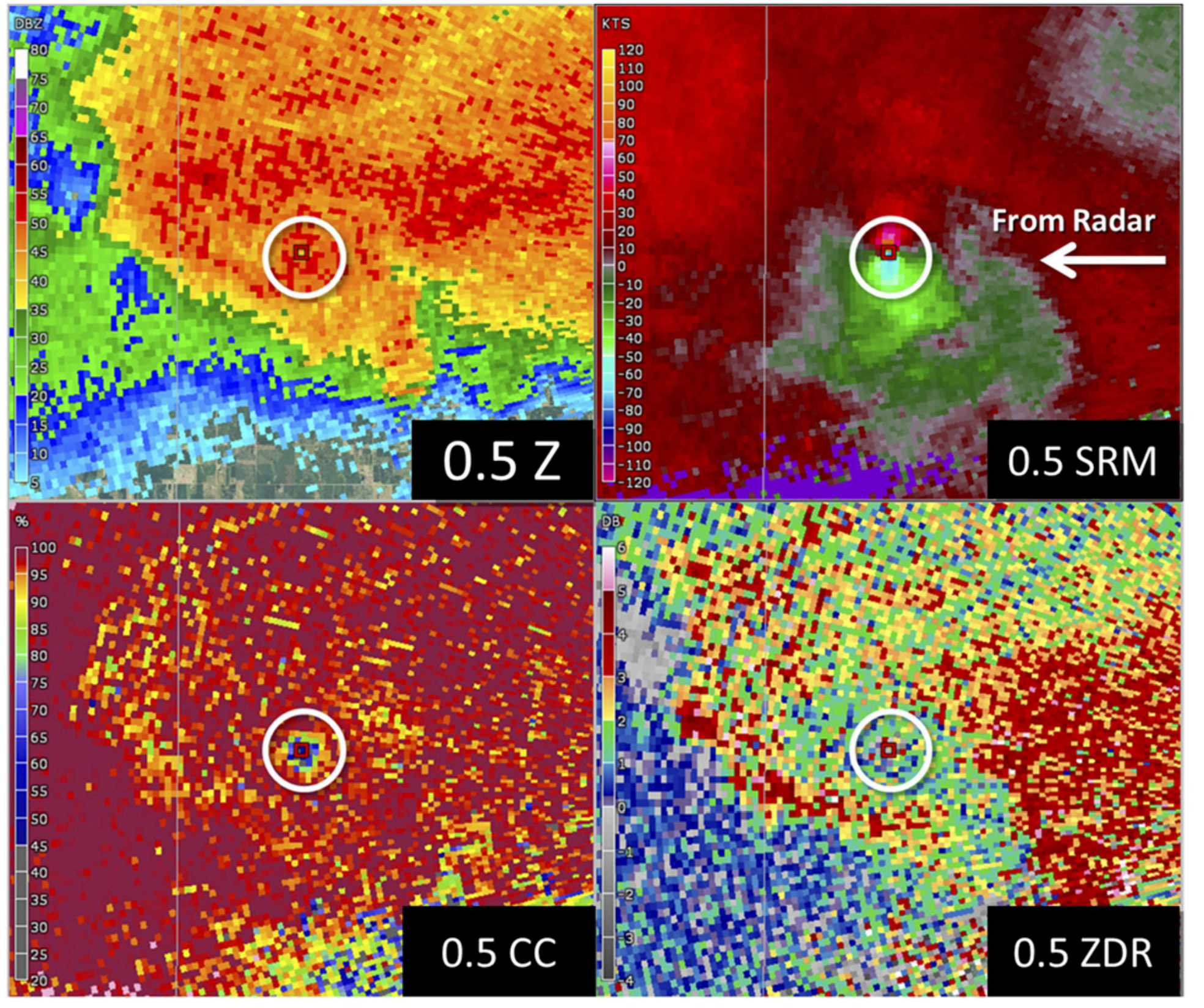Good evening! Here is an article review on how rotational velocity values from Doppler radar may be used to track tornado damage ratings (think Fujita!) in real time. A fair warning! This post is more geared toward weather nerds looking for a bit of a challenge, as things tend to get pretty technical in academia.
The WSR-88D is the Doppler radar first implemented in the late 1980s and the early 1990s. The radar uses a radial beam to locate storms. Unlike the previous radar, the WSR-88D is able to locate where rotation is. Although the Doppler radar cannot locate precursors to tornado formation, it may be used to diagnose the potential strength of a tornado in real-time.
Doppler radar revealed a tornadic vortex signature associated with tornadic supercells, but cannot perfectly predict tornadoes. This is a result of insufficient spatiotemporal resolution due to beamwidth and range limitations of the radar. Although tornadoes are not resolved by the WSR-88D alone, the tornadic vortex signature and a midlevel mesocyclone at a greater range from the radar shows promise as a tool to estimate tornado intensity.

Furthermore, for near-ground, high-resolution observations of tornadic wind fields from a mobile doppler radar, WSR-88D observations may be used alone to estimate low-level tornado intensity. It also outputs an algorithm related to tornado damage ratings. This allows for real-time estimates of tornado intensity, not otherwise available for National Weather Service warning decisions.
Resolving rotation signatures improved in 2008, when the effective beamwidth of the radar was reduced and overlapping beam coverage was added. The changes allowed for greater temporal resolution of rotational velocity signatures at the lowest elevation angle.
The study looked at a sample of both tornadic and non-tornadic severe thunderstorms. The data from the tornado-producing thunderstorms was from 2009-2013, and the data from the non-tornadic thunderstorms was from 2014-2015.
Non-tornadic thunderstorms were included to mimic scenarios the National Weather Service may face, as not all storms produce tornadoes. Furthermore, this expanded the study to include the calculation of EF-scale damage rating probabilities with the presence of only a severe right-moving supercell or a quasi-linear convective system. The study took into account rotational velocity to assess the Fujita rating of tornadoes in real time.
This study adds improvements to previous work done on the subject by providing calibrated probabilistic guidance, which allows for more accuracy when the National Weather Service adds “considerable” and “catastrophic” damage tags as a part of the Impact-Based Warnings program.
The storms selected for the study had wind gusts greater than or equal to 50-kt, and hail with a diameter greater than or equal to one inch. For short lived tornadoes, a minimum of two scans was considered. If cyclonic circulation could not be identified in the lowest elevation scan, it was not included in the sample. The more intense tornadoes during 2014-2015 were focused in clusters across the mid-South, from eastern Nebraska to the eastern Texas Panhandle. Tornadoes across the mid-South tended to have large rotational velocity values when the tornado damage rating was EF3+.
However, the rotational velocity of tornado events across the high plains had higher values in correlation with the Fujita scale compared to tornado events in the mid-South. The important takeaway from this study is that rotational velocity may help with prediction of tornado damage in real time, but the value of rotational velocity compared with Fujita scale ranking differs between regions. This is because the Fujita scale ranking differs from the amount of damage caused by a tornado. For this reason, tornadoes in the Great Plains are often more intense than suggested by their EF-scale damage ratings alone.
The study concludes that rotational velocity and circulation diameter are better indicators of tornado damage rating than tornadic vortex signatures.
There are three things I wish the authors would have investigated. For one, it would be interesting to see if a rating scale for tornado strength could possibly be created from rotational velocity values, to give the actual strength of the storm rather than the storm’s possible damage. Second, the authors could study whether rotational velocity correlates with hail diameter to see if more powerful storms produce bigger hailstones. Finally the authors could further investigate if tornadoes caused by hurricanes have different values of rotational velocity than regular tornadoes with the same EF-scale rating in the same region.
Work Cited
Thompson, R.L., B.T. Smith, J.S. Grams, A.R. Dean, J.C. Picca, A.E. Cohen, E.M. Leitman, A.M. Gleason, and P.T. Marsh, 2017: Tornado Damage Rating Probabilities Derived from WSR-88D Data. Wea. Forecasting, 32, 1509–1528, https://doi.org/10.1175/WAF-D-17-0004.1

